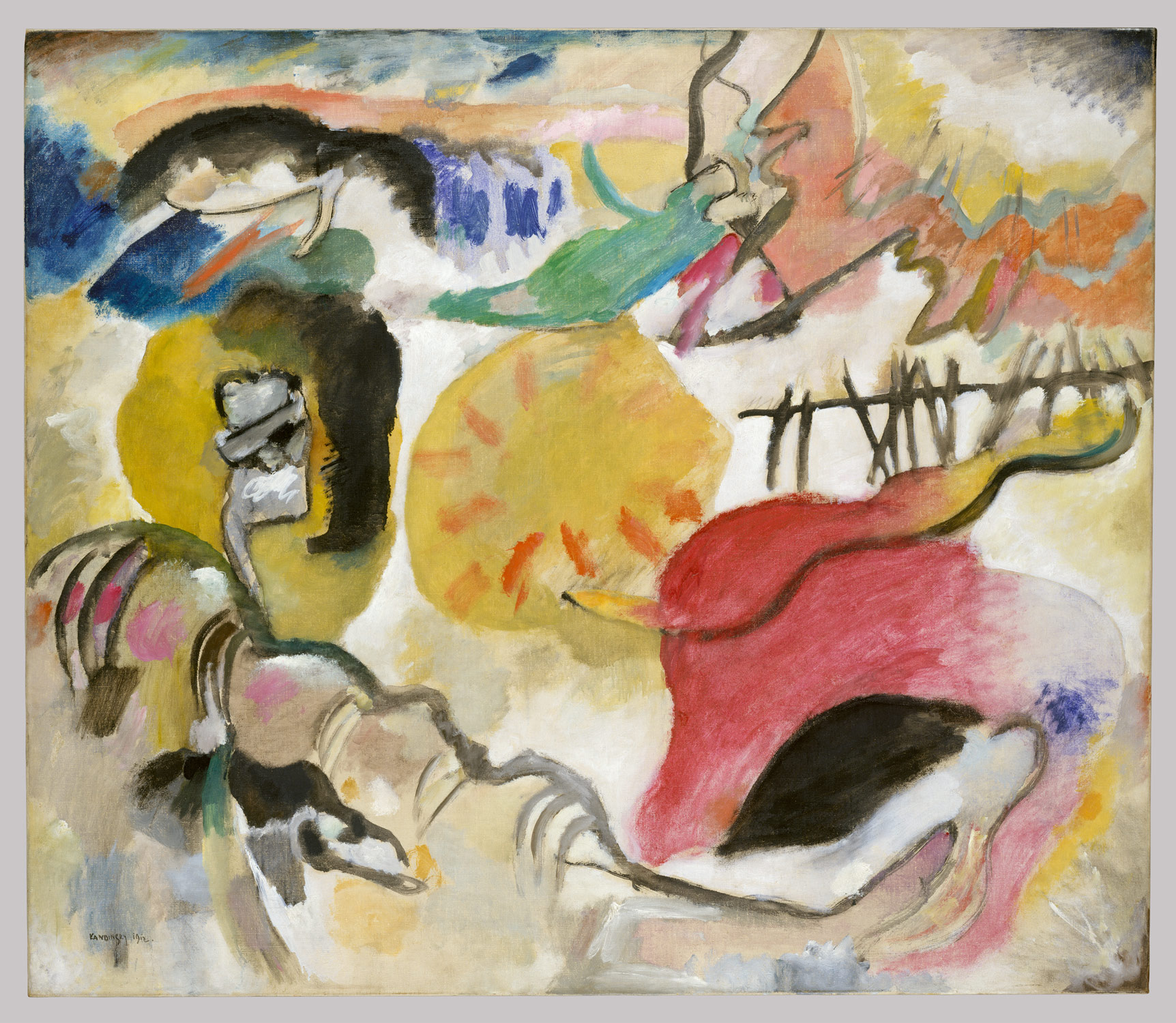 |
| Improvisation no. 27 (The Garden of Love) |
In 1911 Wassily Kandinsky co-founded a loose association of artists,
Der Blaue Reiter (The Blue Rider), to promote a new more spiritual and emotional approach to art as opposed to the materialist approach that was popular at the time. The following year, when he painted
The Garden of Love, Kandinsky also published his famous book
Concerning the Spiritual in Art. In it he spoke of his beliefs in primacy of the inner, spiritual world and his unique take on
color theory (due to his
synesthesia). Kandinsky sought to express spiritual truths through his art; working in the abstract, he believed that by dematerializing the appearance of his subject, without completely removing visual reference to it, he could reveal the true essence of the subject. The visual reference that he drives at in
The Garden of Love is most likely that of the biblical story of the Garden of Eden and Paradise -- Old and New testament themes were recurring in Kandinsky's works. The composition consists of a large yellow sun that is seemingly pulsating rays of red, but that is the only recognizable feature of the painting. Kandinsky also suggests three abstracted embracing pairs of figures as well as several animal shapes. He suggests these images rather than clearly depicting them because he believed that the idea of
The Garden of Love could be expressed without explicit representation of the physical world. Kandinsky's ultimate goal was for his art to be able to communicate on its own terms, independent of naturalistic signs. He used lines and color as the foundations of this visual “language” that he likened to that of music, which expressed pure emotion free of representation. Kandinsky often used musical terminology to describe his work, and in the subtitle of this painting, the word improvisation suggests "a largely unconscious, spontaneous expression of inner character, the nonmaterial nature."
Sources:
http://www.metmuseum.org/toah/works-of-art/49.70.1
http://www.learner.org/courses/globalart/work/231/index.html


No comments:
Post a Comment